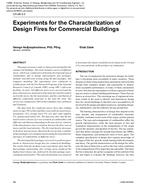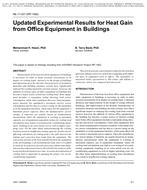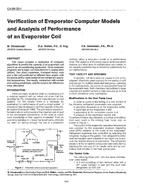The objective of this study is to evaluate the impact of an ECM blower on the system performance of a 5-ton (17.6 kW) air conditioner over arange of airflow rates (100%, 90%, and 80% of the nominal airflow rate) and blower speeds (high, medium, and low speed). The blower airflowand power data were measured over a wide range of external static pressures (ESPs) from 0.1 to 1.1 in. w.g. (25 to 275 Pa) for each speedsetting. The cooling capacity, Energy Efficiency Ratio (EER) and Seasonal Energy Efficiency Ratio (SEER) over a range of evaporator airflowrates from 2250 to 1000 ft³/min (1.06 to 0.47 m³/s) were experimentally determined in accordance with AHRI Standard 210/240. Best-fitcurves were generated from the measured data to characterize the aerodynamic and cooling performance of the unit. By using the performance curves,an empirical model was developed and used to predict the system performance at various combinations of airflow and speed setting.
The system performance at different operating conditions was quantified by normalized capacity, EER and SEER. The results indicated that a20% drop in evaporator airflow would result in a 4% decrease in total cooling capacity and a 6% decrease in EER and SEER. The sameairflow reduction would also lead to an 11.5% decrease in sensible capacity and more than a 7% decrease in both sensible EER and sensibleSEER. For a given evaporator airflow rate, using less restrictive ductwork is always favorable to the system performance. At the nominal airflowrate, a 1.3% increase in total capacity, a 6% boost in EER and a 6.5% in SEER were observed. For the other airflow rates, the improvementfollowed the same trend but to a lesser degree.
In summary, the results generated in this study quantify the improvement in the system performance as a result of using less restrictive ductworkwhile delivering design airflow rate. It also provides an increased understanding of the impact of the ECM blower performance on the systemcooling capacity and power draw. In addition, the experimental data produced in this study could be integrated with building energy simulationprograms to estimate the energy consumption of air conditioning systems under various operating conditions.
Citation: ASHRAE Papers CD: 2014 ASHRAE Annual Conference, Seattle, WA
Product Details
- Published:
- 2014
- Number of Pages:
- 8
- File Size:
- 1 file , 510 KB
- Product Code(s):
- D-SE-14-C021


